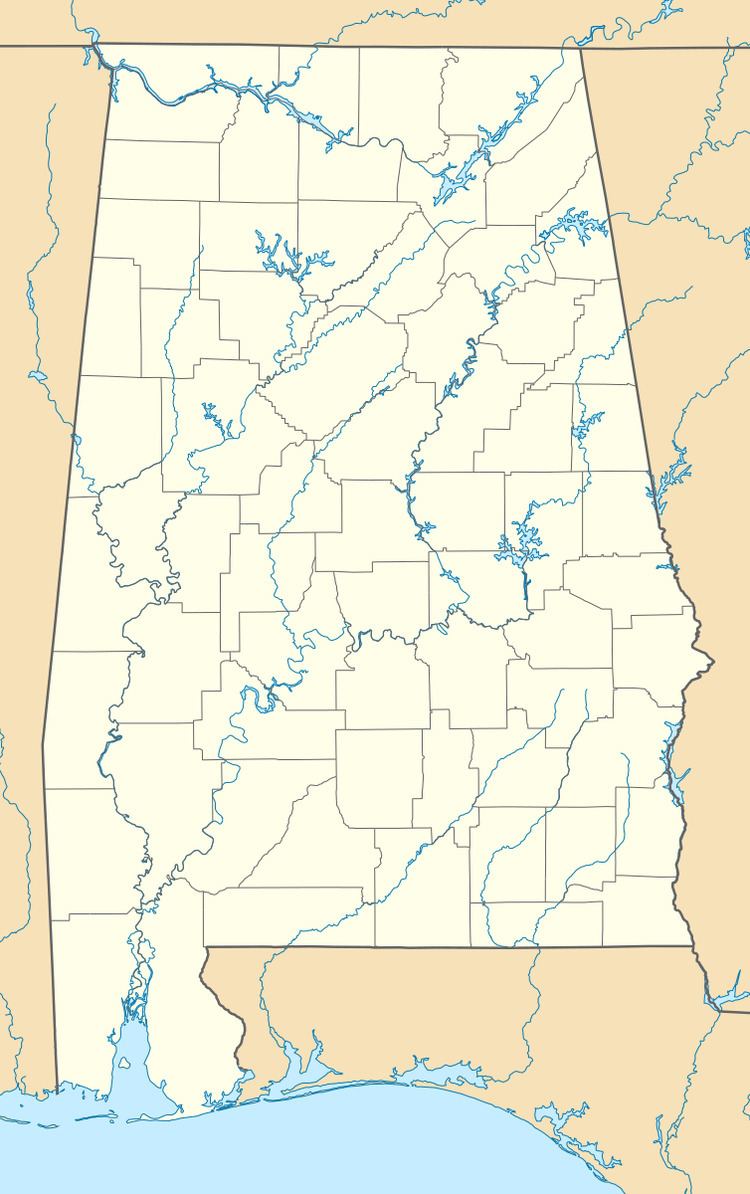Built 1818 (1818) NRHP Reference # 77000203 Area 34 ha | Built by Joseph Heslip Opened 1818 Added to NRHP 3 August 1977 | |
 | ||
The Cedar Creek Furnace (also known as the Alabama Iron Works) is a former blast furnace site near Russellville in Franklin County, Alabama. It was the first iron ore furnace in Alabama, preceding an industry that would come to dominate the state's economy in the late 19th and early 20th century.
Contents
History
The furnace was built by Joseph Heslip, who had experience running iron works in his native Pennsylvania and in Tennessee. Heslip acquired the property in Franklin County around 1818 and constructed the furnace using slave labor. A cholera outbreak in 1820 killed Heslip and many of the slaves who operated the furnace. The furnace and site were sold at auction in November 1825 and purchased by Tennessee ironmaker Aaron Wells. Wells operated the site for two years before selling it to Robert Napier. Napier implemented many improvements to the process, and the furnace became a commercial success producing high-quality product. The furnace operated until around 1832 to 1836, possibly due to a flood on the creek that reached the furnace and extinguished it, hardening the metal and rendering the furnace inoperable.
Before the furnace was constructed, most local blacksmiths used imported iron. The furnace's pig iron was used by locals and also transported to the Tennessee River near Pickwick Landing and shipped to New Orleans and overseas.
Erected 1815 by Joseph Heslip who used the iron to make utensils for early settlers. Iron was from surface brown ore smelted by charcoal fires.
Site
The furnace was situated in a bend of Cedar Creek, from which it gets its name. The furnace was 15 feet (4.5 meters) high, 25–30 feet (7.5–9 m) in diameter at the base tapering to an 8 feet (2.5 m) diameter chimney at the top. It was built of limestone quarried nearby and lined with refractory brick made on site. It was fired with charcoal made from the surrounding forests. A bellows which supplied the furnace with air was powered by a 12-foot (3.5-m) wide mill race which was diverted from the creek. The mill race also powered a forge hammer, grist mill, and saw mill. A warehouse was built on the river bank, only the foundation of which remains. The overseer's house was located northeast of the furnace. A small cemetery near the site contains about a dozen graves, mostly unmarked.
